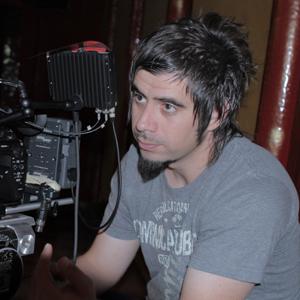Ernesto Díaz Espinoza

Ernesto Díaz Espinoza ended up in the 2000 landscape of Chilean cinema by making films that go against the currents. Within a Chilean film production that tended to dissociate itself away from genres, Díaz submerged himself in them and built a personal body of work he tried, often erratically, to provide with statutes of identity.
Kiltro was the first direct approach to a genre that is still considered to be minor (martial arts), and it possessed the virtue of having its social verisimilitude coherently solved. With the commercial neighborhood of Patronato, in Santiago, as its physical and dramatic micro-universe, the film tells the story of a boy whose superhuman skills with his fists tempers his soul, and turns him into something the likes of a superhero.
Already in his first film Díaz clearly showed his inclination to the references of popular cinema, from which his closest influence seemed to be Quentin Tarantino’s Kill Bill. With a style that is best defined by its emphasis instead of its subtleties, Díaz also showed a laborious domain of the editing, a visceral weakness for choreographic spectacle, and a notion of the hero character (immature in his affections and pathological in his relationships with the surrounding environment) that will be featured again in his following films.
Faced with the expectations created by his debut film, Mirageman had the merit of articulating the same themes and characters featured in his first film, but now in a recipient that satirizes superhero cinema, injected with a persistent sense of comedy over the constant smokescreens imposed by the genre. The figure of an avenger whose only weapons are his fists and feet in Michelle Bachelet’s Chile, gains a social and political interpretation that instead of hiding itself, gets boosted through the secondary characters and a constant documentation of urban everyday life in Santiago.
Both Kiltro and Mirageman expressed a search for identities and a sense of appropriation, of chilenization of the genre, which the filmmaker will later progressively abandon in his two following films
Mandrill, his most ambitious film in aesthetic and choreographic terms, equally takes its referents from the films of Oriental noir and James Bond, and structures once again a story of revenge set in the city of Miraflores, in Peru, without the irony and swagger of his previous films. It will also be the last film starred by Marko Zaror, Díaz’s lead actor and the physical and moral emblem of his cinema.
After postponing his Santiago violenta project, Díaz retreats to the exploitation format to conceive Bring Me the Head of the Machine Gun Woman, a film shot with meager resources that share the teenage construction of its male lead, the recreation of slums, and small-time criminals. It’s also a dilated progression towards a final clash, which in this case it’s the one between an indestructible assassin, her former lover who wants to annihilate her, and a young man circumstantially turned into a bounty hunter who has fallen for her.
Dominated by a minimum causality of events, and almost annulled by the instantaneity of situations, Bring Me the Head of the Machine Gun Woman dissolves history into a spectacle that moves forward with video-game logic. It purposely avoids any coherent behavior in its characters, its referential and chronological information, or especially in the full verisimilitude of its precarious plot. It is, from any perspective, a flirt with the aesthetics of trash cinema, a source that is consistent with Díaz’s creative sense, but can also be elusive when extracting from it credentials of cinematographic authorship.
FB
Films
Schedule


















 0800-333-7848 / M to F / 10:00am to 08:00pm
0800-333-7848 / M to F / 10:00am to 08:00pm